From Idea to Validation: A Startup’s Market Research Journey

Are you an aspiring entrepreneur with a groundbreaking startup idea? Hold that thought! Before diving headfirst into product development, validating your concept is crucial.
Many startups falter not because of poor execution but due to a lack of market demand. The journey from idea to successful startup is paved with thorough market research and validation.
Imagine spending months—even years—building a product, only to discover it doesn’t solve a real problem or meet customer needs.
This scenario is all too common in the startup world. However, by embracing a structured approach to idea validation, entrepreneurs can significantly increase their chances of success.
From conducting comprehensive market analysis to engaging directly with potential customers, the validation process is a critical step that separates thriving startups from those that fizzle out.
In this blog post, we’ll explore the essential steps of “From Idea to Validation: A Startup’s Market Research Journey.”
We’ll delve into understanding the importance of startup idea validation and uncover key methods for generating startup ideas that resonate with your target market.
Whether you’re starting with a market problem, seeking to improve consumer experiences, or addressing a personal pain point, this guide will equip you with the tools to validate your concept effectively and set your startup on the path to success. 🚀💡
Understanding the Importance of Startup Idea Validation

1. Defining startup idea validation
Startup idea validation is a critical process that assesses the demand for a product or service in a target market before fully developing and launching it.
This systematic approach involves testing business assumptions, gathering customer insights, and evaluating the potential for success.
By engaging in thorough validation, entrepreneurs can refine their offerings to align with market needs and increase their chances of building a viable business.
The validation process typically includes several key steps:
- Articulating business goals and assumptions
- Assessing market size and potential share
- Researching consumer interest through search volumes
- Conducting customer validation interviews
- Testing the product through alpha and beta phases
Steps like these are why big companies thrive in the industry for example; Dropbox started with a simple explainer video to gauge interest before building their product. Testing your idea through alpha and beta phases isn’t just smart, t’s survival
These steps underscore the iterative nature of entrepreneurship, emphasizing the need for flexibility and responsiveness to feedback throughout the startup journey.
2. Benefits of proper validation
Proper startup idea validation offers numerous advantages that can significantly impact a venture’s trajectory:
- Resource optimization: By validating ideas early, entrepreneurs can save time and resources that might otherwise be wasted on developing products with little market demand.
- Increased investor confidence: Thorough validation demonstrates to potential investors that the startup has a solid understanding of its market and customers, potentially improving funding opportunities.
- Enhanced product-market fit: Through customer interviews and feedback, startups can refine their offerings to better meet user needs and preferences.
- Risk mitigation: Validation helps identify potential challenges and pitfalls before significant investments are made, allowing for strategic adjustments.
- Clearer business focus: The “Rule of One” concept, which advises focusing on solving a single problem for one customer with one product, can emerge from proper validation, leading to a more focused and effective business model.
- Continuous improvement: Regular validation creates a cycle of ongoing refinement, ensuring that the product evolves with changing market demands.
3. Consequences of skipping validation
Failing to properly validate a startup idea can lead to severe consequences that may jeopardize the venture’s success:
- Misaligned product development: Without validation, startups risk developing features that don’t resonate with consumers, resulting in wasted resources and missed opportunities.
- Poor market fit: Skipping validation can lead to products that fail to address genuine market needs, resulting in low adoption rates and customer dissatisfaction.
- Increased financial risk: Investing heavily in an unvalidated idea can lead to significant financial losses if the product fails to gain traction in the market.
- Difficulty pivoting: Without early feedback, startups may struggle to identify necessary changes or pivot opportunities, potentially leading to business failure.
- Reduced credibility: Lack of validation can undermine a startup’s credibility with investors, partners, and potential customers, making it harder to secure support and resources.
- Missed opportunities for innovation: The validation process often uncovers unexpected insights that can lead to innovative solutions, which may be overlooked without proper market research.
By understanding the importance of startup idea validation, entrepreneurs can lay a solid foundation for their ventures.
This process not only minimizes risks but also ensures that the final product meets or exceeds initial objectives.
With this crucial step completed, the next phase in a startup’s journey involves exploring key methods for generating startup ideas.
Key Steps to Conduct Market Research for Startups

1. Define Your Business Idea
The first crucial step in conducting market research for startups is to clearly define your business idea.
This process involves articulating your product or service concept, identifying the problem it solves, and outlining its unique value proposition.
A well-defined business idea serves as the foundation for all subsequent market research efforts.
To effectively define your business idea, consider the following:
- Problem statement: What specific issue or pain point does your product or service address?
- Solution overview: How does your offering solve this problem?
- Target audience: Who are the primary beneficiaries of your solution?
- Unique selling proposition: What sets your product or service apart from existing alternatives?
3. Assessing Market Demand
Before investing significant time and resources into your startup idea, it’s crucial to validate its potential in the market. One of the most effective ways to do this is by assessing market demand.
This process involves analysing consumer needs, preferences, and purchasing habits to determine if there’s a viable market for your product or service.
To assess market demand effectively:
- Conduct surveys and interviews with potential customers
- Analyse search volume for related keywords
- Study industry reports and market trends
- Examine competitor sales and growth data
By gathering this information, you can gauge whether there’s sufficient interest in your offering and identify potential gaps in the market that your startup can fill.
2. Identifying Your Target Audience
Once you’ve confirmed there’s demand for your product or service, the next step is to identify your target audience.
This involves creating detailed buyer personas that represent your ideal customers. These personas should include demographic information, pain points, goals, and purchasing behaviours.
To create accurate buyer personas:
- Analyse data from existing customers or similar products
- Conduct focus groups with potential users
- Use social media analytics to understand audience preferences
- Leverage market segmentation techniques
Understanding your target audience allows you to tailor your product, marketing strategies, and overall business approach to meet their specific needs and preferences.
4. Testing Your Minimum Viable Product (MVP)
With a clear understanding of market demand and your target audience, it’s time to test your minimum viable product (MVP).
An MVP is a basic version of your product with just enough features to satisfy early customers and provide feedback for future development.
Key steps in MVP testing include:
- Developing a prototype or basic version of your product
- Recruiting a group of early adopters or beta testers
- Collecting and analysing user feedback
- Iterating on your product based on the insights gained
This process allows you to validate your business idea in a real-world setting while minimising costs and risks associated with full-scale product development.
5. Analysing Competitor Landscape
A thorough analysis of your competitors is essential for validating your business idea. This step helps you understand the existing market dynamics, identify potential obstacles, and uncover opportunities for differentiation.
To conduct an effective competitor analysis:
- Identify direct and indirect competitors
- Evaluate their products, pricing strategies, and market positioning
- Analyse their strengths and weaknesses
- Identify gaps in their offerings that your startup can address
By understanding the competitive landscape, you can refine your business idea to offer unique value propositions that set your startup apart from existing players in the market.
Examples of Market Research for Startups

1. Types of Market Research for Startups
Market research is a critical component of any startup’s journey. By conducting thorough research, entrepreneurs can gain valuable insights into their target market, potential customers, and competitors.
| Research Type | Purpose | Example Tools |
| Primary | Direct customer feedback | Surveys (Google Forms, Typeform) |
| Secondary | Existing market trends | Reports (Statista, IBISWorld) |
| Competitor Analysis | Study rivals’ strategies | SEMrush, Similarweb |
Here are some essential types of market research that startups should consider:
A. Primary Research
Primary research involves collecting data directly from potential customers or users.
This type of research provides first-hand information and can be tailored to address specific questions or concerns. Methods of primary research include:
- Surveys: Online or in-person questionnaires to gather quantitative data
- Interviews: One-on-one conversations with potential customers for qualitative insights
- Focus groups: Group discussions to explore attitudes and preferences
- Observations: Watching potential customers interact with products or services
B. Secondary Research
Secondary research involves analysing existing data from various sources. This method is often less time-consuming and more cost-effective than primary research.
Sources for secondary research include:
- Industry reports and studies
- Government publications and statistics
- Academic journals and research papers
- Competitor websites and marketing materials
Market Segmentation
Market segmentation research helps startups identify and understand different customer groups within their target market. This involves:
- Dividing the market into distinct segments based on demographics, psychographics, or behaviour
- Analysing the needs and preferences of each segment
- Determining which segments are most profitable or have the highest growth potential
Trend Analysis
Staying ahead of market trends is essential for startups. Trend analysis research includes:
- Monitoring industry publications and thought leaders
- Attending trade shows and conferences
- Analysing social media trends and discussions
- Tracking technological advancements and their potential impact on the market
By employing these various types of market research, startups can gather comprehensive insights to validate their ideas, refine their products or services, and develop effective marketing strategies.
This foundation of knowledge will prove invaluable as entrepreneurs move forward in their startup journey, helping them make informed decisions and minimize risks.
Tools and resources for startup market research

Online Survey Platforms
Online survey platforms are invaluable tools for startups conducting market research. These platforms allow entrepreneurs to gather quantitative data from a large sample of potential customers quickly and cost-effectively.
Popular options include SurveyMonkey, Google Forms, and Typeform. Each platform offers unique features, such as customizable templates, logic branching, and real-time analytics.
When selecting a survey tool, consider factors like ease of use, data visualization capabilities, and integration options with other business tools.
Social Media Listening Tools
Social media listening tools help startups monitor brand mentions, track industry trends, and gain insights into customer sentiment.
These tools analyse conversations across various social media platforms, providing valuable qualitative data. Some widely used social media listening tools include:
- Hootsuite Insights
- Sprout Social
- Brandwatch
- Mention
These tools offer features like sentiment analysis, competitive benchmarking, and trend identification, enabling startups to make data-driven decisions and stay ahead of market trends.
Market Research Databases
Access to comprehensive market research databases can provide startups with in-depth industry reports, consumer behaviour data, and market forecasts.
While some of these resources can be costly, they offer valuable insights that can inform strategic decisions. Key market research databases include:
- Statista
- IBISWorld
- Euromonitor International
- Mintel
Many public libraries and academic institutions offer free access to these databases, making them accessible to startups with limited budgets.
Competitive Analysis Tools
Understanding the competitive landscape is crucial for startups. Competitive analysis tools help entrepreneurs gather intelligence on their rivals, identify market gaps, and refine their unique value propositions.
Some popular competitive analysis tools include:
- SEMrush
- Similarweb
- Ahrefs
- Crayon
These tools provide insights into competitors’ online presence, marketing strategies, and customer engagement tactics, allowing startups to position themselves effectively in the market.
Customer Feedback Platforms
Gathering direct feedback from potential customers is essential for validating startup ideas.
Customer feedback platforms facilitate this process by connecting entrepreneurs with target audiences. Some notable platforms include:
- UserTesting
- Userbrain
- TestingTime
- Validately
These tools allow startups to conduct user interviews, and usability tests, and gather qualitative feedback on product concepts or prototypes.
Take Airbnb, for example. The founders initially struggled to attract users, but after interviewing potential customers, they realized better photography and trust mechanisms were key. Their market validation led to product adjustments that made Airbnb a global success.
Data Visualization Tools
Presenting market research findings effectively is crucial for gaining stakeholder buy-in and making informed decisions.
Data visualization tools help startups transform complex data into easily digestible visual formats. Popular options include:
- Tableau
- Google Data Studio
- Power BI
- Infogram
These tools enable startups to create compelling charts, graphs, and interactive dashboards that effectively communicate market insights.
By leveraging these tools and resources, startups can conduct comprehensive market research, validate their ideas, and make data-driven decisions.
The key is to select the right combination of tools that align with the startup’s specific research objectives, budget constraints, and target market characteristics.
With these resources at their disposal, entrepreneurs can navigate the challenging terrain of market validation with greater confidence and precision.
Startup success isn’t about luck, it’s about validation. Before building, test your idea, talk to real users, and refine your concept. Ready to start your validation journey? Try out these research tools and share your findings!
